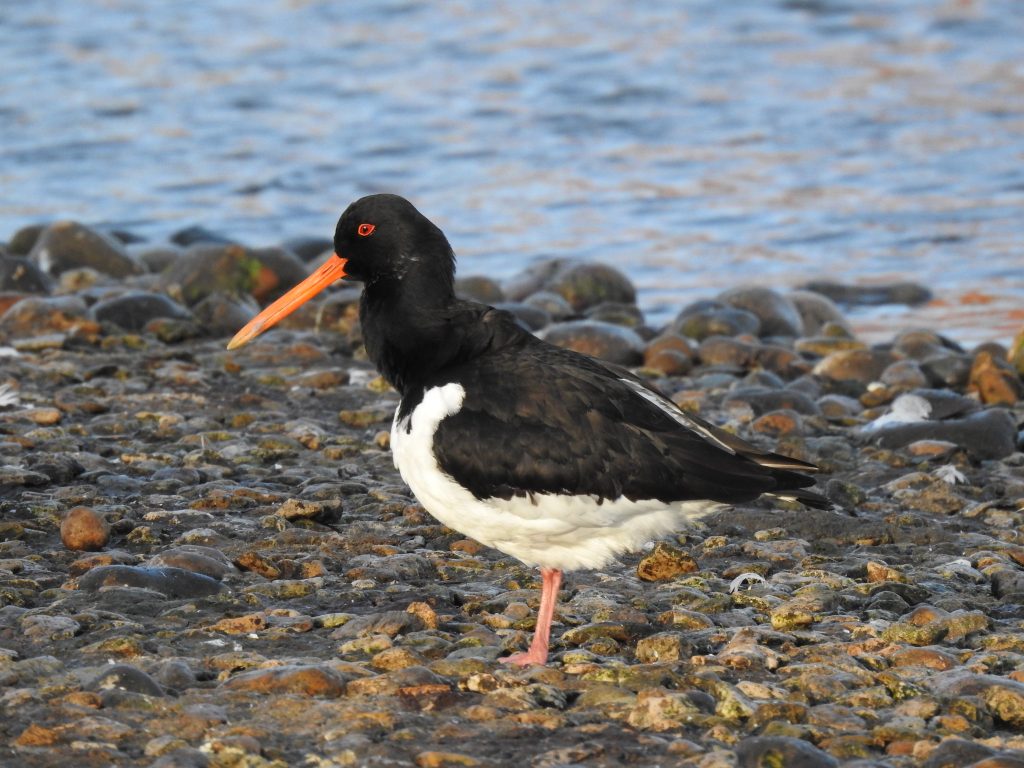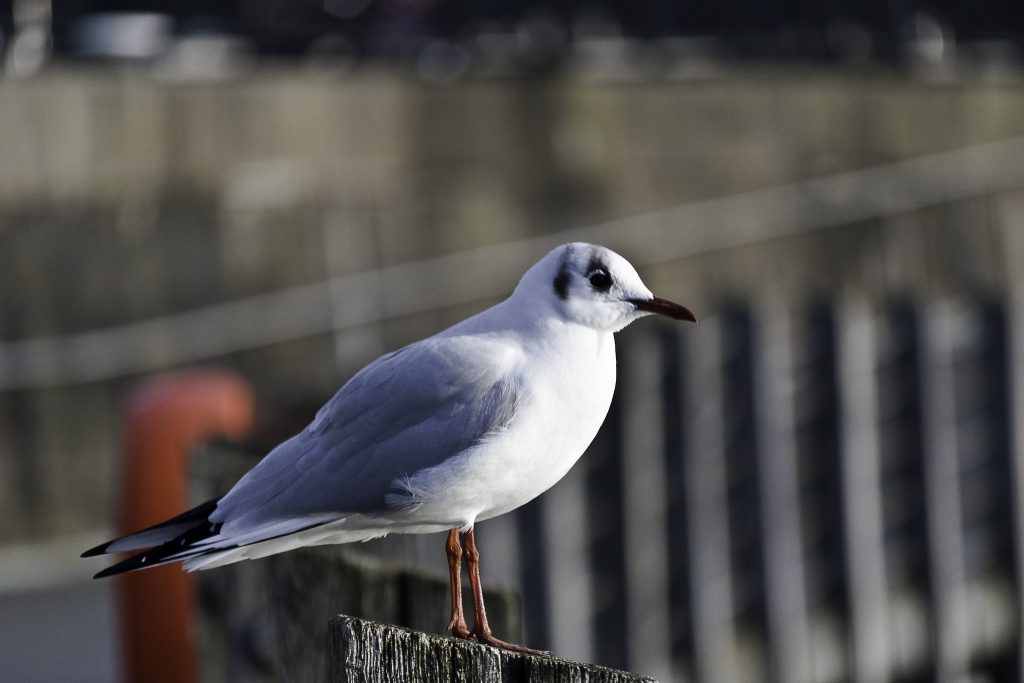Birds
With its world-renowned 14 m tidal range, the Severn Estuary provides an extremely dynamic estuarine environment for many bird species. On the largest spring tides, around 30 million tonnes of sediment are carried within the Estuary. This sediment is deposited around the Estuary, maintaining the system of mudflats and saltmarshes which support wildlife. These habitats around the Estuary act as important ‘rest-stops’ and feeding stations for migratory birds. Wintering wildfowl and waders migrate from the cold climates of Alaska, Greenland, and Russia, to the milder UK winter climate. Each winter the salt marshes and mudflats of the Severn Estuary host an average of 74,000 birds.
The Severn Estuary Special Protection Area (SPA), designated under the Habitats Regulations, supports 6 species of European importance, 1 passage species and 11 species of national importance. A total of 16,942 hectares of wetland is also designated as a Ramsar site, which denotes its importance for waterbirds and breeding gulls.
Different species of bird favour different areas to hunt for food. To do this, they need the right tool for the job: their beak! Special adaptations of the beak allow bird species to feed in different ways (see figure 1). Curlews eat a mixture of worms, shellfish and shrimps. With their long and curved bills, they can easily pierce the mud to access food burrowing beneath. Other species, such as the dunlin are visual feeders, and sprint across salt marshes to catch snails, worms and insects on the surface with their short bills.

Waterfowl and seabirds protection sites
Within the Severn Estuary, there are many different sites of national and international importance for seabirds. At Bridgwater Bay National Nature Reserve (NNR), around 200 bird species have been recorded, and for good reason: the reserve contains the largest area of salt marshes in Somerset! These grounds are also the European moulting ground for shelduck, where 2000 birds gather each July. Waders such as oystercatcher and knot also inhabit the reserve, hopping along the mudflats to search for food. Avocet, which became extinct in Somerset during the 1940’s, was reintroduced in 2012, and is one of the most successful species of bird to recover in the UK. The Peterstone Wentlooge Marshes reserve is a Site of Special Scientific Interest (SSSI) located along the outer Estuary. The marshes are a perfect location for birdwatching during every season of the year. In spring and autumn, dunlins, turnstones and redshanks arrive to feed on worms and other invertebrates burrowing in the mudflats. In winter, the ducks come to stay, with species such as teal, wigeon and shelduck making a visit.
The SPA sites also protect international species, designated under Annex I species (see section on Nature Conservation Designations). For the Severn Estuary, these species are the curlew and Bewick’s swan, which use the mudflats and salt marshes for feeding and roosting. Up to 5000 Bewick’s swan make their yearly journey to the UK from Siberia.
When birdwatching, make sure to follow our guide for safety on the Severn. Never walk out to sea when the tide is low, where it is likely you will get stuck and become vulnerable to the rising tide. For more information, visit our ‘Safety on the Severn’ webpage.

Regularly occurring migratory sites
The Estuary supports internationally important populations of migratory species, avoiding harsh winters further north for the UK’s milder temperatures. The dunlin is one of the key bird species of the Severn Estuary in number, feeding on insects, snails and worms. When winter weather becomes particularly harsh around other places in Europe, even more birds flock to the Estuary. Bird numbers have been recorded above 100,000, making the Severn Estuary among the top 15 sites for absolute numbers of wildfowl! It is also the top UK site for European white fronted geese.
Nationally important bird populations
Important bird species from within the UK also use the Severn Estuary as feeding and overwintering grounds. As part of the Ramsar and Site of Special Scientific Interest, wigeon, pintail, teal, pochard, tufted duck, whimbrel, spotted redshank and more species from within the UK use the Estuary. The black-backed gull and herring gull breeding populations also make a home in the Estuary, offering a safe refuge for the threatened (red-listed) species.
Where to see?
As well as being able to see the interesting and varied range of birdlife which appears naturally along the banks of the Severn Estuary, there are also protected areas and reserves to enjoy birdwatching in. These areas include Slimbridge Waterfowl and Wetlands Trust (WWT), the Severn Beach area, Newport Wetlands, Cardiff Bay and Bridgwater Bay Nature Reserve. When visiting the Severn Estuary, follow the tips in the ASERA Good Practice Guidelines to reduce disturbance to the special habitats and species of the Severn Estuary. This is particularly important when near waterbirds.
Slimbridge Wetland Centre covers 325ha of land and hosts a variety of bird species, such as the siskin, kingfisher and ruff. In 1962, the nene (Hawaiian goose), was brought back from extinction through WWT’s captive breeding programme and was successfully released into the wild. For more information about Slimbridge, see section ‘Oldbury on Severn’.
At the Newport Wetlands, Cetti’s warblers and bearded tits can be seen and heard in the reedbeds, with ducks, geese and swans visiting the reserve in large numbers during the winter. For more information, see section ‘Newport Wetlands’.

Pressures
In today’s modern and rapidly changing society, populations of seabirds and waterbirds has been affected by several issues. These factors are called ‘pressures’ because they make it harder for bird species to survive and reproduce.
The creation of Cardiff Bay in 2000 impacted upon large numbers of waterbirds on the Severn Estuary. Before the creation of the bay and impounding of water, species such as redshank, curlew, dunlin, and teal regularly fed and roosted within the bay. The annual mean species of waterbird dropped from 26.5 pre-barrage closure to 22 post-barrage closure. However, species such as grebes and rails have increased in number since the creation of the barrage.
Climate change
Declines in the numbers of waders in the Severn Estuary are likely linked to the impacts of climate change. Sea level rises, although relatively small, can have a large impact on the sediment dynamics within the Estuary. Densities of dunlin (their concentration in one area) has been linked to the percentage of silt and clay in the Estuary sediments. Rising sea level and encroaching man-made structures towards the coastline act to ‘squeeze’ coastal habitats. This coastal squeeze reduces the area in which birds roost and feed. For more information on climate change within the Estuary, visit the section ‘Climate Change’.
For more information, visit:

 Severn Estuary Partnership
Severn Estuary Partnership